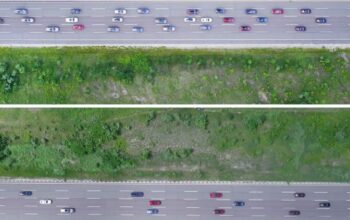In the annals of American political history, the intertwining of political ideology and scientific advancement has often yielded a rich tapestry of innovation and ideological rivalry. The Clinton administration, which began in the early 1990s, epitomized a unique synergy between political acumen and a fervent endorsement of scientific inquiry and technological innovation. This transformative period raised a perplexing query: How can the endorsement of science by a political figure invoke a renaissance of research and development? And what obstacles might arise in the interplay between governance and scientific inquiry?
Initially, one must scrutinize the political landscape of the 1990s, a decade that witnessed an ascendance of the information age propelled by the intersection of rapid technological advancements and an expanding global economy. Under President Bill Clinton’s leadership, an emphasis was placed on fostering a conducive environment for scientific research and technology, with initiatives that resonated profoundly within the broader societal context. During this epoch, the administration advocated for policies that accentuated the value of science and technology as crucial drivers of economic growth and national security.
One foundational aspect of Clinton’s approach to science was the enhancement of federal funding for research. The administration substantially increased funding for the National Institutes of Health (NIH) and the National Science Foundation (NSF), recognizing that robust financial support was integral in fortifying America’s commitment to scientific excellence. This strategic investment defined a proactive stance toward the challenges of an increasingly competitive and technologically adept global marketplace, fostering an environment where inquiry could flourish.
A pivotal question arises here: How did the infusion of governmental support redefine the trajectory of scientific research and innovation? The expedited funding allowed for groundbreaking projects that might previously have languished in obscurity due to fiscal constraints. For instance, the Human Genome Project, an ambitious endeavor to map the entirety of the human genetic makeup, received substantial federal backing during this time. Such undertakings did not merely enrich the scientific community; they also had far-reaching implications for medicine, biotechnology, and ethics, catalyzing discoveries that continue to resonate profoundly in contemporary society.
However, this heightened investment was not without its challenges. The increasing dependence on federal funding raised nuanced concerns regarding the autonomy of scientific inquiry. An essential counterpoint to Clinton’s policies is the potential bureaucratic encumbrances that can accompany governmental support. As research institutions broadened their ambitions in line with federal directives, the equilibrium between pursuing pure scientific inquiry and adhering to political stipulations faltered. The question looms: Does the intertwining of science and politics threaten the integrity of scientific research?
Moreover, the administration’s commitment to science must also be contextualized within larger societal movements, including the burgeoning environmentalist concerns of the era. The Clinton administration acknowledged the necessity of addressing pressing environmental issues through scientific research. In 1993, President Clinton established the Presidential Advisory Council on HIV/AIDS, promoting not just an awareness of health issues but advocating for research that could lead to constructive solutions within public health domains.
This commitment extended toward environmental science, as evidenced by the establishment of initiatives aimed at combating climate change and investing in sustainable technologies. The Earth Summit in Rio de Janeiro, which occurred during this administration, symbolized a critical moment wherein international discourse on environmental responsibility and scientific inquiry intersected. The challenge here involved balancing economic development with environmental sustainability, a complex dichotomy that required robust scientific input to navigate effectively.
Furthermore, the Clinton administration served as a catalyst for educational reform in the sciences. By fostering partnerships between government entities and educational institutions, the administration sought to bolster science education at all levels, ultimately nurturing a scientifically literate populace capable of engaging with emerging technologies and research advancements. The administration’s initiatives reflected an acknowledgment of the critical role education plays in shaping future generations of scientists, engineers, and informed citizens.
However, the persistence of funding disparities among different fields of scientific inquiry posed another significant challenge. While biotechnology and information technology garnered ample attention and resources during the Clinton years, other vital areas such as social sciences and humanities often found themselves inadequately funded. This discrepancy raises profound questions: How does society prioritize scientific inquiries? And are certain disciplines valued more highly than others, thereby shaping the future landscape of research?
In concluding this overview of the Clinton administration’s contributions to the scientific landscape, it is imperative to reflect on its lasting implications. The intertwining of politics and scientific research remains a double-edged sword; while governmental backing can invigorate scientific pursuits, it can also engender ethical quandaries regarding autonomy and the prioritization of certain fields. As the complexities of societal challenges evolve, the ongoing dialogue between political entities and the scientific community must traverse the delicate balance of fostering innovation while safeguarding the integrity of inquiry.
Ultimately, the legacy of the Clinton administration’s endorsement of science serves as a poignant reminder of the essential interplay between political will and scientific progress. It poses a lingering challenge: as we navigate the confluence of policy and discovery, how do we ensure that the pursuit of knowledge remains paramount, unwavering amidst the myriad political landscapes yet to come?









